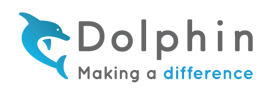In the previous installment of this blog series, we examined the art of drawing in, promoting, and enlisting a diverse pool of candidates, specifically focusing on those with neurodivergence and disabilities. If you happened to miss out on Part 1, you can easily catch up by visiting the Dolphin Blog.
.jpg?width=1500&height=1000&name=successful-job-interview%20(1).jpg)
Continuing our exploration in Part 2, we have the pleasure of diving deeper into our interview with Rachel Willetts, the talented Project Office & HR Manager here at Dolphin. With her guidance, we will unpack her process for conducting fair candidate screenings, making necessary adjustments, and providing accommodations throughout the entire interview process.
We will also provide you with valuable recommendations for an array of tools that can greatly assist you. Furthermore, we will delve into the realm of funding sources available to support workplace accommodations, along with the legislation governing hiring practices that promote equal opportunity employment.

About Rachel Willetts
Rachel has been an integral part of Dolphin since May 2008. With a wealth of experience and expertise - she is a certified Prince2 practitioner, holds a BA Honors degree in Business Management, and has an executive MBA in Leadership and Management. In her Human Resources role, Rachel plays an essential role in recruitment and hiring. She ensures that Dolphin attracts and retains a diverse and talented workforce. Her dedication to inclusion training, mental health awareness, and women's health issues has had a profound impact on the overall culture at Dolphin.
MJ Barry: We left off last time with you giving us the steps you use to successfully attract a pool of diverse candidates. Let's dive into the next step of the hiring process – screening resumes or Curriculum Vitae (CVs). Previously, you suggested that working as a team is a great way of eliminating any personal bias, but let's discuss some of the more quantifiable methods of screening.
Question: How do you go about screening candidates and what resources or tools have you developed or are accessible to assist hiring managers and teams in assessing a candidate's skills and qualifications for the role?
Rachel: With your job adverts attracting a large, and diverse, number of applicants, you need a method for shortlisting. It’s also important to move quickly when recruiting to ensure that top candidates don't accept another position. Remember, it’s important that your minimum requirements are not so strict that they deter quality candidates from applying, and not so broad that you attract a large number of unqualified applicants.
Identifying the ‘short list’ of applicants you want to invite to the next step of your recruitment process, is typically based on specific criteria you’ve set for the job. This can include the minimum requirements you listed in the adverts as well as scoring any additional ‘desirable’ traits, experience or qualifications. For example, our job advert may say "Experience with CRM software” but the candidates who have experience with our specific CRM software would get a higher score. Any candidates that do not meet the minimum requirements are not added to the shortlist or scored.
Historically at Dolphin, we used manual methods to screen and shortlist all of our applicants. Now we use the automated candidate screening tools available on the various job sites (e.g. Indeed, LinkedIn). These tools greatly reduce the number of CVs/resumes we have to screen by ensuring candidates meet the essential criteria – this is a nice feature and one of the benefits of using a commercial hiring site.
For scoring our candidates, we use candidate scorecards to standardise the evaluation of candidates through the selection process. Each member of the hiring team, for any open position, scores candidates on a variety of competencies specific to that role. The collective effort guarantees we identify the strongest candidates.
Typically, our candidate scorecards include scores for job-specific competencies based on the candidate's CV/resume, previous experience, quality of work samples shared or produced during recruitment, responses to interview questions and potential areas of concern.

Key Takeaways
- Prepare to move quickly through the hiring process to retain the most talented candidates
- Develop your own method for shortlisting candidates
- Leverage the built-in, automated tools of Job Posting sites to eliminate unqualified candidates before they get to you
- Use a standardized scorecard for evaluating a candidate's qualifications
- Train all hiring teams to use the scorecard to ensure efficacy
MJ Barry: Given the feedback we've received from our readers, it's clear that interviewing candidates is the topic that raises the most questions. It's completely understandable, as there can often be a sense of uncertainty when interviewing any candidate. Considering the interconnected nature of these questions, we will make an effort to address them all in this section.
Questions: How can interviews be conducted to provide candidates with divergence or disabilities the best opportunities to demonstrate their expertise and abilities?
How should you handle a situation where a candidate does not initially disclose a disability but then requests an accommodation during the interview?
Rachel: Once we have our shortlist of candidates, Dolphin always starts the interview process via telephone or a pre-scheduled video call. This is the best option for a first stage interview and is not only less time-consuming for both the hiring manager and the candidate but also the most inclusive option we can offer. Any candidates with neurodivergence or disabilities can first speak with us from an environment where they are comfortable, using a technology they are familiar with. This allows them to fully focus on aceing the interview.
When we extend an invitation for candidates to schedule an interview with us, we make it clear that we are open to using any video conferencing technology they prefer or conducting the interview via telephone. During video calls with candidates, we never insist on having the camera turned on. Instead, we prioritize the candidate's comfort and allow them to communicate with us in the way they feel most at ease. Additionally, we always provide guidance on how they can ensure their technology setup is suitable before the video interview takes place.

In all correspondence throughout the recruitment process, we always ask applicants, “If you have a health condition or disability that may require adjustments to our interview process, please let us know and we can discuss your requirements.” We are confident that our company brand values encourage all candidates to feel comfortable to ask for adjustments at any stage and make it clear we are happy to be flexible and support candidates in any way we can.
In order to create an environment where all candidates can showcase their expertise and abilities, we take into account the time frames for tasks or assessments used to evaluate their knowledge. We believe in providing candidates with the flexibility they need to excel, so we do not impose strict time limits on their assignments. Instead, we engage in open discussions with candidates to understand their preferences and reach a mutually agreed-upon timeline for completion. For instance, for roles at Dolphin, we often assign written tasks or technical challenges and allow candidates to complete them in their preferred space and time. This approach ensures that candidates can comfortably demonstrate their skills and potential without unnecessary pressure.
In summary, to support each candidate effectively, just ask them what they need!

Key Takeaways
- Make it safe for candidates to advocate for themselves in terms of adjustments
- Start the interview process with a phone or video call so that candidates can use the technology they're used to, in an environment they're comfortable in
- Give candidates the opportunity to work at their own pace when doing skill assessment projects
MJ Barry: According to the Disability and Employment Fact Sheet published by the United Nations, there is a startling statistic that 50-70% of individuals with disabilities are unemployed in industrialized countries, and that jumps to 80-90% in developing countries.
This unfortunate reality can largely be attributed to the misguided belief that individuals with disabilities are incapable of performing at the same level as their peers, and that accommodating them in the workplace is financially burdensome. However, as a society, we have come to understand that people with disabilities are not only capable, but they also bring unique perspectives and talents to the table. Let's now delve deeper into the second part of this notion.
Question: Does employing individuals with disabilities truly impact a company's bottom line? What are the costs and benefits of having a workforce that includes people with diverse abilities?
Rachel: Creating an inclusive work environment not only ensures compliance with local legislation but also enhances the overall perception of your company among both customers and employees. In terms of cost, as we previously mentioned, hiring and recruiting individuals with disabilities, neurodivergence, or long-term health conditions most times does not require any complex adaptations. Moreover, there are often funding options and financial incentives available in many regions to support the necessary accommodations, such as the purchase of assistive technology, for long-term adjustments after hiring.
Having a diverse workforce that includes employees with disabilities not only brings a wide range of skills, such as creativity, innovation, and different problem-solving perspectives, but also gives your company a competitive edge. Many successful corporations, like Microsoft, have acknowledged the positive impact of hiring individuals with disabilities on their bottom line, as it has improved their overall performance and success.

Key Takeaways
- Creating an inclusive environment positively impacts your employees and your customers
- Incentives to supplement the costs of accommodations exist in nearly every industrialized and developing country
- Having a diverse workforce gives your company unique skills and perspectives to draw from and can provide a competitive edge
MJ Barry: One final question. In nearly every country, there are laws in place to promote equal-opportunity employment. It's a question that often makes people uncomfortable, but it's one we're going to address head-on.
Question: How can we ensure compliance with equity legislation and address concerns that actively recruiting a diverse workforce goes against equal opportunity hiring practices?
Rachel: At Dolphin Computer Access, we ensure that all applicants are evaluated for employment based on their skills, qualifications, and suitability for the job, without any consideration for factors such as race, colour, nationality, religion, gender, gender identity, sexual orientation, age, physical or mental disability, marital status, or parental status. Our commitment to equal-opportunity hiring practices is a cornerstone of our company values, and we take pride in fostering an inclusive work environment.
It is essential to understand that being inclusive does not involve recruiting or promoting individuals solely based on their protected characteristics. Providing equal opportunities to marginalized groups does not take away opportunities from groups that already have them. Employers should adhere to the guidance on inclusive recruitment to avoid any form of positive discrimination and instead take positive action to support candidates in overcoming or minimizing potential disadvantages.

Key Takeaways
- Ensure that you evaluate all candidates based on their skills
- Providing equal opportunities to marginalized groups does not take away opportunities from groups that already have opportunities
- Be proactive in minimizing any potential disadvantages that may exist for candidates with diversity
Part 2 has provided a wealth of valuable information, and now it's time to put it into action. Take advantage of the insights Rachel has shared to address any gaps in your current process and enhance your hiring practices.
In the upcoming Part 3, we will explore the strategies for establishing an inclusive work environment that goes beyond mere physical accessibility. We will address the various ways you can ensure equitable and flexible access to information and opportunities, including optimizing meetings, documents, servers, and overall experiences. Get ready to unlock the steps to fostering a truly inclusive workplace!
Dolphin helps you provide accessibility tools in the workplace
Dolphin helps make your business truly accessible to employees, colleagues and customers. Our range of assistive technology includes tools for people with sight loss and print disabilities.
Learn more at yourdolphin.com


Let Us Know What You Thought about this Post.
Write your comment below.